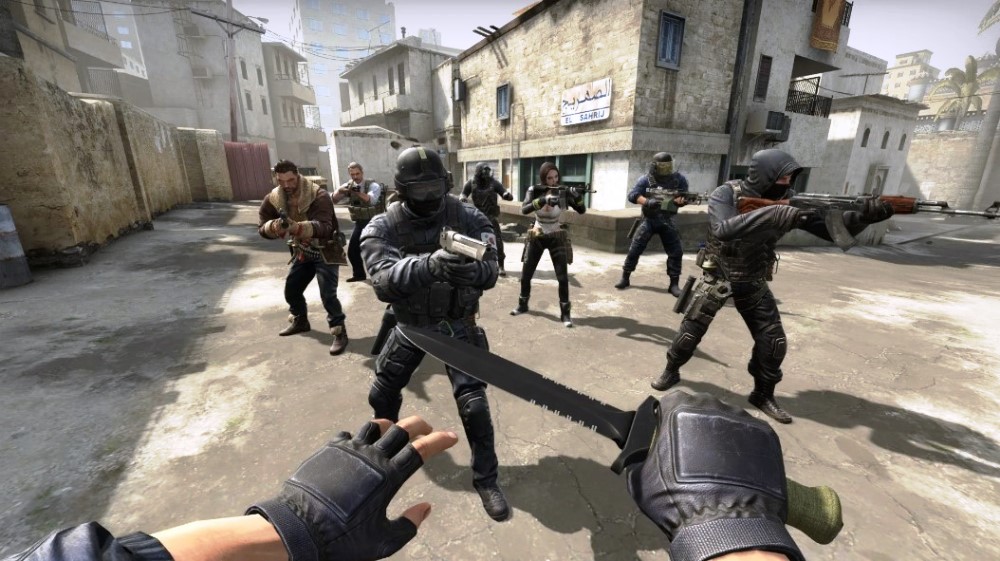
Counter-Strike: Global Offensive (CSGO) is a competitive first-person shooter game that requires strategic thinking and coordination among team members.
Here are some common types of CSGO game strategies that teams may use:
- Rush strategy: In this strategy, the team quickly rushes towards the enemy team’s position with the aim of overwhelming them with superior firepower and speed.
- Split strategy: The team divides into two or more groups and attacks the enemy from different directions, hoping to catch them off guard and create confusion.
- Hold strategy: The team defends a specific area or objective, setting up defensive positions and waiting for the enemy to come to them.
- Rotate strategy: The team moves quickly between different objectives, responding to the enemy’s movements and trying to take control of key areas of the map.
- Fake strategy: The team pretends to attack one objective or area, while secretly preparing to attack a different objective or area, hoping to catch the enemy off guard and create an advantage.
- Eco strategy: The team saves their money and buys only minimal equipment and weapons, with the aim of having a stronger economy in the future rounds.
- Force-buy strategy: The team buys weapons and equipment even when they don’t have a lot of money, with the aim of surprising the enemy and taking control of the game.
- Default strategy: The team spreads out across the map and gathers information about the enemy’s movements and positions, trying to create an advantage through superior intelligence and strategy.
These are just a few examples of the many different strategies that teams can use in CSGO. The best strategy depends on the situation, the map, and the strengths and weaknesses of the team and the enemy.
What is the difference between a tactic and a strategy game

The terms “tactics” and “strategy” are often used interchangeably in the context of video games, but there is a distinction between the two.
A tactical game typically focuses on short-term decisions and actions that are made in response to specific situations or challenges. Tactical games often involve managing a small group of units or characters and making tactical decisions in real-time, such as choosing where to move, which weapons to use, and how to coordinate attacks.
In contrast, a strategic game typically involves long-term planning and decision-making that affect the overall course of the game. Strategic games often involve managing resources, developing technologies, building structures, and making strategic decisions that affect the player’s position in the game.
To put it simply, tactics are the short-term decisions and actions taken in response to immediate challenges, while strategy is the long-term planning and decision-making that shapes the overall direction and outcome of the game.
However, many games combine elements of both tactics and strategy, and the distinction between the two can sometimes be blurry. Ultimately, whether a game is considered more tactical or more strategic depends on the specific gameplay mechanics and how they are implemented in the game.
What kinds of tactics there are in CSGO
In Counter-Strike: Global Offensive (CSGO), there are many different tactics that teams can use to gain an advantage over their opponents.
Here are some common tactics that are frequently used in CSGO gameplay:
- Flanking: This tactic involves attacking the enemy from behind or the side, catching them off guard and creating confusion.
- Baiting: Baiting involves using one player as bait to draw the enemy’s attention, while other players attack from a different direction.
- Trading: Trading is a tactic in which one player sacrifices themselves to take out an enemy, allowing a teammate to move in and finish the job.
- Grenade usage: Proper use of grenades, such as smoke grenades, flashbangs, and Molotov cocktails, can be a powerful tactic to disorient or block off the enemy.
- Fake defuse: This tactic involves pretending to defuse a bomb to draw out the enemy and then attacking them while they are distracted.
- Boosting: Boosting involves using one player to boost another player to a higher position, giving them an advantage in combat or allowing them to access a previously inaccessible area of the map.
- Pop-flashing: Pop-flashing involves using a flashbang grenade to temporarily blind the enemy while moving in for an attack.
- Cover fire: Cover fire involves using one player to provide covering fire while other players move into position or attack the enemy.
These are just a few examples of the many different tactics that teams can use in CSGO. The best tactics depend on the situation, the map, and the strengths and weaknesses of the team and the enemy. Successful CSGO teams often employ a mix of different tactics to keep their opponents guessing and gain an advantage.


